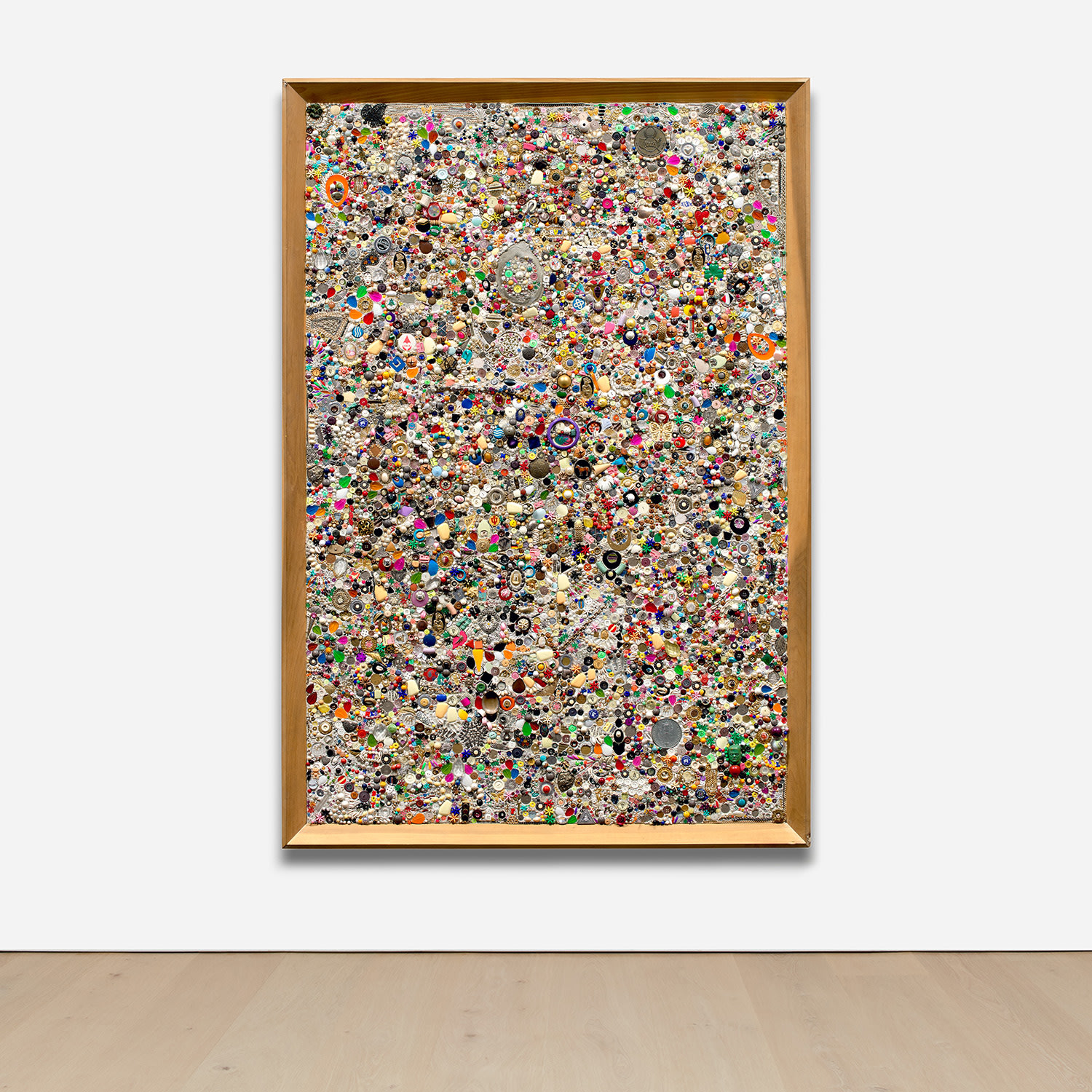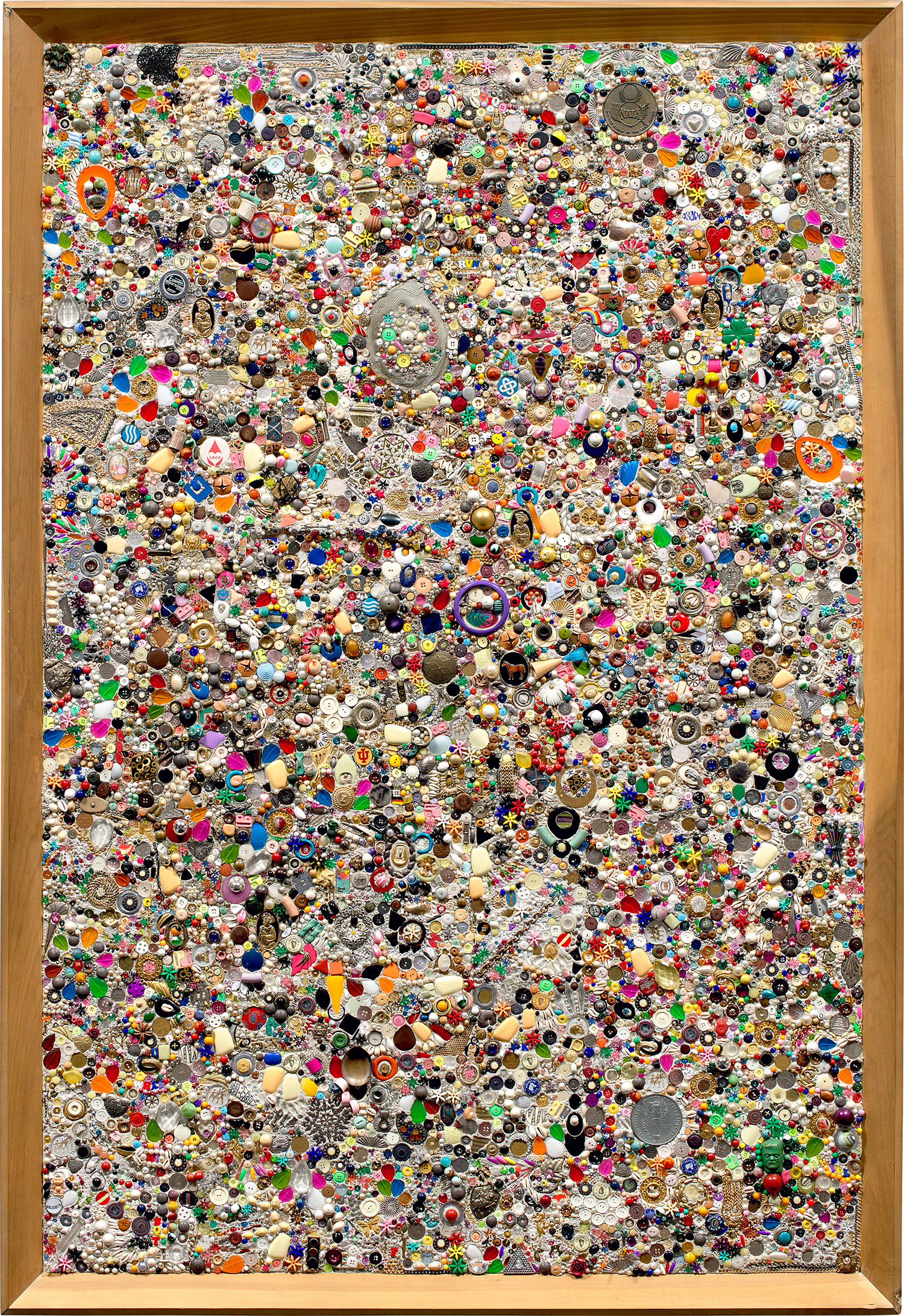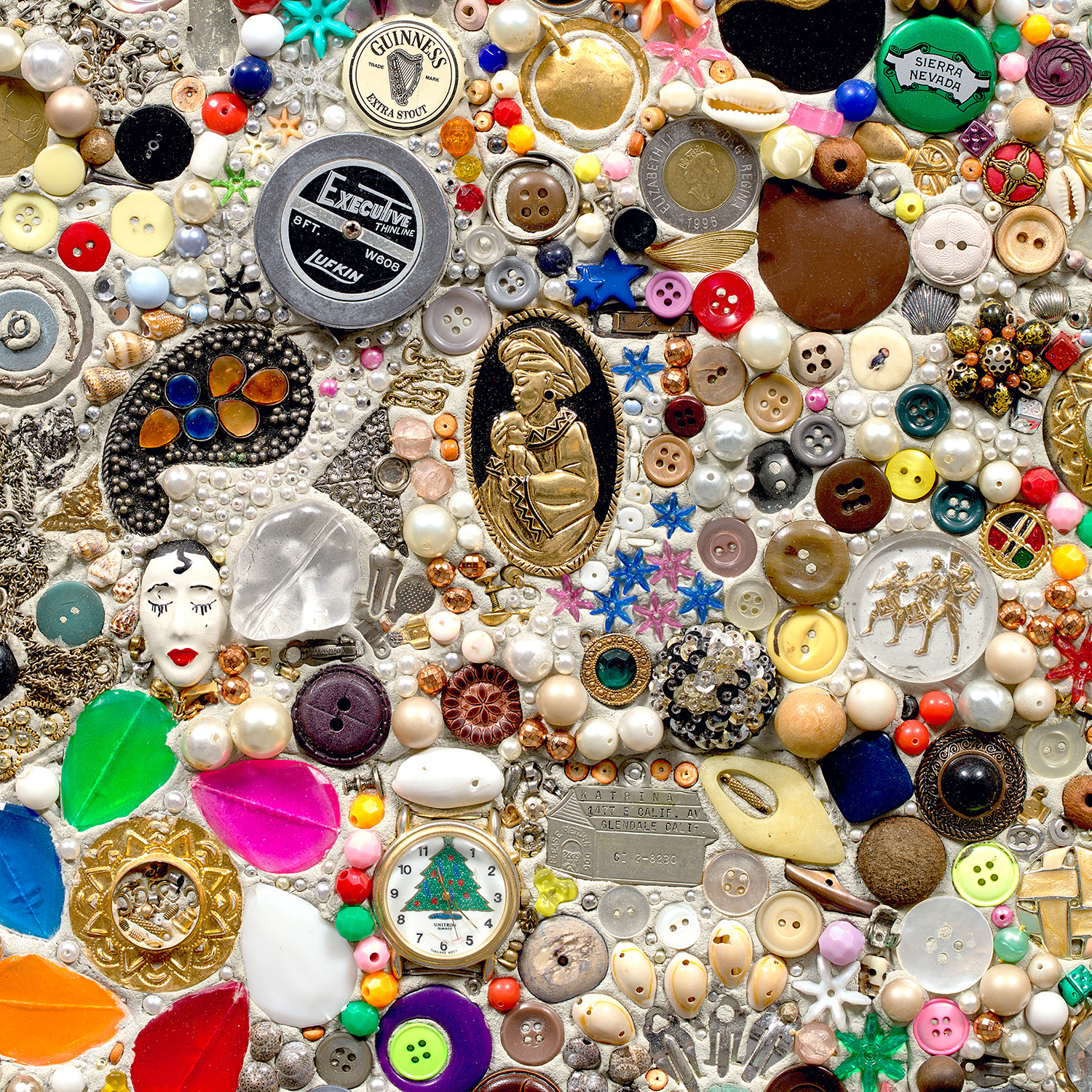





38
Mike Kelley
Memory Ware Flat #3
signed and dated “M. Kelley 2000” on the reverse
mixed media on wood panel
object 70 1/4 x 46 1/4 x 4 1/2 in. (178.4 x 117.5 x 11.4 cm)
framed 76 x 52 1/2 x 4 1/2 in. (193 x 133.4 x 11.4 cm)
framed 76 x 52 1/2 x 4 1/2 in. (193 x 133.4 x 11.4 cm)
Executed in 2000.